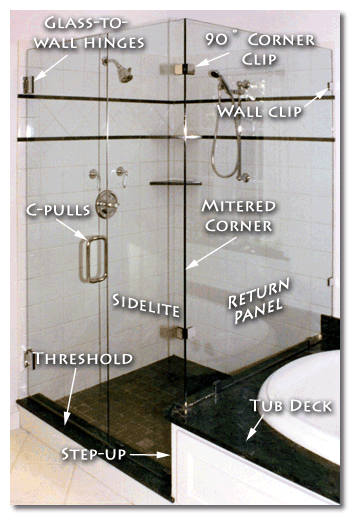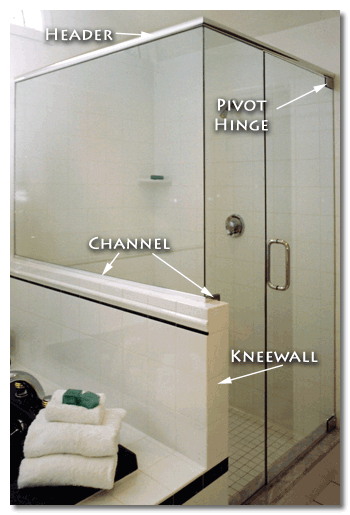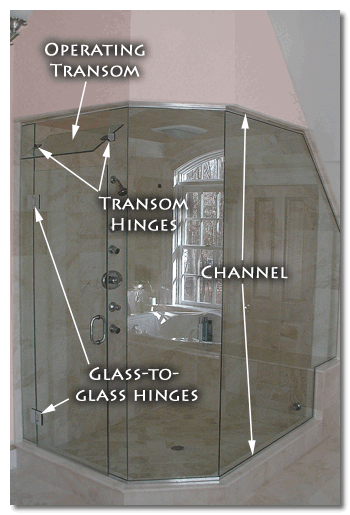
 |
||||||||
Frameless Enclosure Terms |
 |
Glass-to-wall hinges: These hinges are typically used when there is no horizontal bar at the top of the enclosure. They require solid wood behind the tile and durock for proper attachment. Without wood, they cannot be used! C-pulls: The most common handle used on a frameless enclosure (also available on most framed and semi-frameless enclosures). They are attached through holes in the glass. There are some different styles available, including knobs. Pulls are easier to grab than knobs when dealing with wet, slippery hands. Mitered Corner: This requires mitering each piece of glass to achieve the desired angle (two 45° miters make a 90° corner, etc). It is also possible to use butt-glazed corners where both pieces of glass are square cut with one overlapping the other. Mitered corners are vastly more attractive; from inside the shower, a mitered corner virtually disappears. Clips: These are available as a standard clip for wall attachment, 90° corners and 135° corners. Custom clips can be fabricated for virtually any angle, but try to have your enclosure built for standard clips. These clips are attached to the glass with screws which penetrate each piece of glass through a hole. They provide a solid, mechanical attachment without the use of a lot of metal. |
Header: The horizontal support at the top of a frameless enclosure. With a height of approximately 1 1/4", headers provide the necessary structural rigidity to properly align and support multi-panel enclosures. They are used in conjunction with pivot hinges and allow you the option of a frameless enclosure even when there is no wood in the walls thus eliminating glass-to-wall hinges as an option. Pivot Hinges: Vertically pivoting hinges which attach at the top to the ceiling or header and to the sill below. A perfect option when there is no wood in the wall or for wider doors which exceed the weight capacity of wall hinges. Since virtually all of the weight of the door is supported by the bottom hinge, the threshold should be a solid material rather than an acrylic or fiberglass pan. Channel: This is the material of choice for securing the bottom edge of stationary glass panels. Channel provides a secure footing while also allowing for a water-tight silicone joint. |
 |
 |
Operating Transom: Typically used (and strongly recommended) for steam enclosures. An operating transom provides for ventilation between showers (it is NOT recommended that you leave your frameless shower door open for ventilation) and is easily closed to provide a seal when taking steam. You'll notice there is no handle on the transom, they are typically operated with the push of a hand. Transom Hinges: These come in either a glass-to-glass or glass-to-wall configuration and support the operating transom panel. They operate under friction allowing you to keep the glass panel open at virtually any angle. Glass-to-glass hinges: These allow for the glass door to be hinged off of another piece of glass. They can be used in almost any layout except for when the stationary glass bearing the weight of the door is so wide that it would sway under the load. These are design issues we can address with you. |